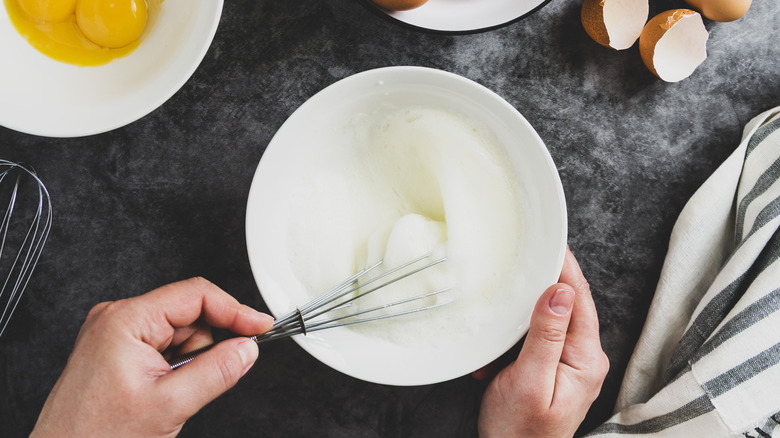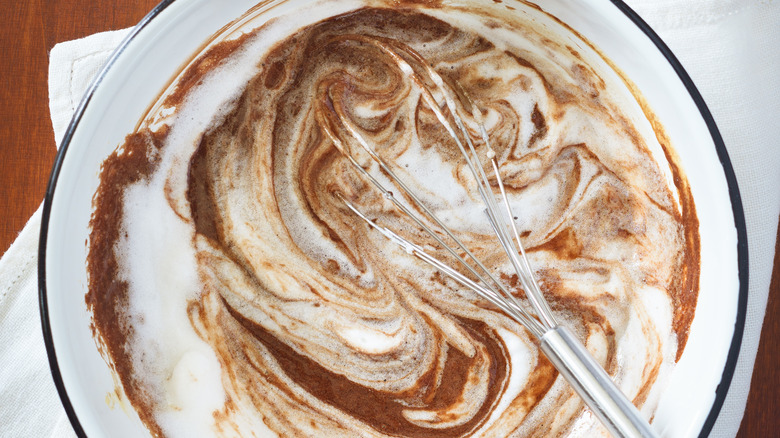Why You Should Use A Whisk To Fold Ingredients Instead Of A Spatula
Bakers rely on numerous ingredients to help their baked goods rise to the occasion, from baking soda to instant yeast. But perhaps no other leavening agent is as difficult to use as the temperamental egg foam. Often used to bring a springy lift to sponge cakes and soufflé, whipped egg whites have a delicate structure, consisting of a fragile network of air bubbles that are easily overwhelmed with heavy ingredients and rough handling.
For this reason, there's a specific technique that bakers use to incorporate this tender egg foam into their heavy batters: the method of folding in ingredients. This same method is used to help mix in other delicate, air-whipped ingredients, like whipped cream, into pastry cream (a la Créme Diplomat). As described in print, folding in ingredients should resemble scooping your heavy mixture over your fluffy mixture in a "J" motion until it is evenly dispersed.
Still, even if you master the art of gently folding in your ingredients, you might be making a misstep with the tool you're using. While a silicone spatula is the most common option for the act of folding, there's a handier tool waiting in the wings: the whisk.
A whisk distributes your dry or wet ingredients in a more efficient way
You may already know that a whisk can be your secret weapon when making popovers, but you may not know how it can help you fold in your air-whipped ingredients. What the whisk lacks in flexibility, it makes up for in its open shape. With its numerous slender tines, the whisk can distribute more egg whites or whipped cream in one fold motion than the single flat edge of a spatula can. Basically, it helps you fold in your ingredients faster and with less air bubble flattening force.
You can also reverse the folding method slightly by sifting in dry ingredients, like powdered sugar or flour, over the foamy base before folding it in with a whisk. Keep in mind that we're talking about a standard balloon whisk, not the Danish dough whisk you'd use for bread dough or a miniature whisk you may use for glazes.
The motion and physical technique will remain the same — you'll continue to pull the base batter up and over the other with your practiced "J" movement. You'll just be swapping the blunt spatula with the more delicate whisk. So the next time you take a stab at making a lighter-than-air Japanese soufflé pancake or a genoise sponge cake, reach for the whisk rather than the spatula when it comes time to fold in your ingredients.

